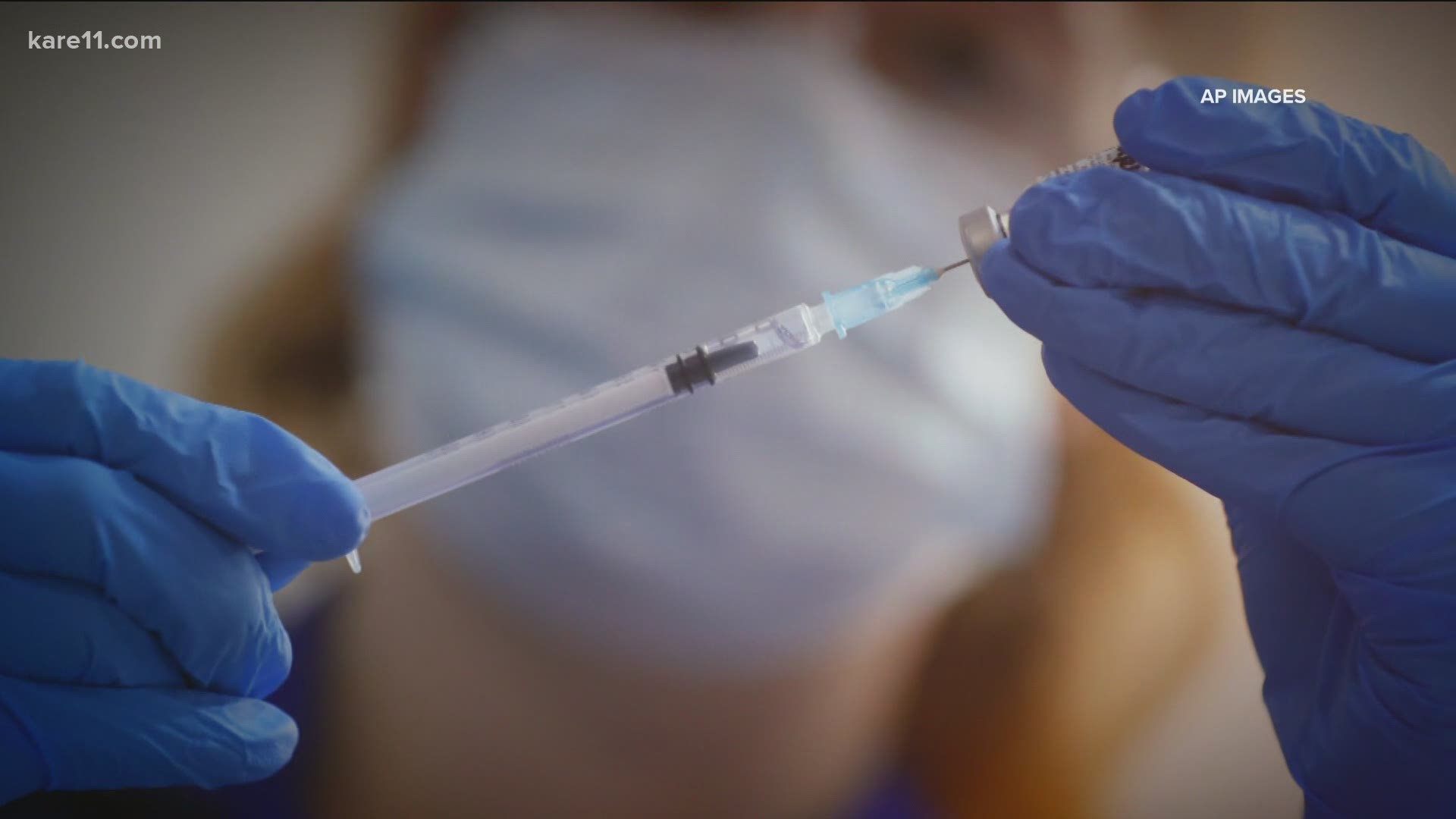MINNEAPOLIS — After all of the historic shots of healthcare workers receiving the Pfizer COVID-19 vaccine this week, hospitals began to discover there were actually extra shots to go around.
Though Pfizer promised that each vial of vaccine contained five doses, many who have begun administering it are finding there's actually enough for a sixth and sometimes a seventh dose in each vial.
In a series of Tweets on Wednesday, the FDA acknowledged the discrepancy, and gave healthcare providers permission to use the extra doses.
Not A Mistake
Former FDA commissioner Dr. David Kessler told MSNBC that a vaccine vials are commonly overfilled by design. He says it is done to make up for design differences in syringes.
"The syringe sometimes, at the very tip, there is some dead volume of liquid left in there, so that's why they overfill," Dr. Kessler said. "If you can use a particular syringe you might be able to get more out of this, and that would be good. That would mean another 10 percent, another 7 million people or so we can get vaccinated and can get toward our goal."
Questions Remain
Despite the potential, state public health officials in Minnesota and elsewhere are still trying to determine how to advise healthcare systems on using extra, unplanned doses.
"On the face of it, it seems so simple and so great," said Kris Ehresmann, Director of Infectious Diseases for the Minnesota Department of Health. "Then when you get into the details, there are a lot of things to think about."
Ehresmann says Minnesota hospitals have also reported finding extra doses in their vials, but due to syringes and other variables, she says MDH still needs more information before signing off on using them.
"Every vial is assured to have had five doses and you may or may not get additional doses out of a vial," she said. "The question is, how do we ensure that that sixth dose is a complete dose."
The FDA later acknowledged that issue as well, writing, "since the vials are preservative free, it is critical to note that any further remaining product that does not constitute a full dose should not be pooled from multiple vials to create one."
There's also another big question. Since each patient requires two doses a month apart, how will hospitals ensure that everyone gets their second shot with each vial containing an unknown number of doses.
Ehresmann says the CDC and FDA are both working on answering those questions. In the meantime, Minnesota leaders are planning on the doses they know they can count on.
Ehresmann: "By the end of this week, we'll have 46,800 doses in the state."
Kent Erdahl: "There could be more than 9,300 extra doses, potentially, if each of those vials has an extra."
Ehresmann: "Yeah, that seems about right... I think the important thing is it would make a difference. So that's why we're looking into it. As soon as we hear something from CDC and FDA, in writing, we'll definitely let our providers know. But we want to make sure that everyone who receives a vaccine, receives the full dose that they need."

